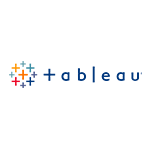Visualización de datos
La visualización del dato es el momento en el que se entrega el valor real a los usuarios, cómo representar la información, la propuesta de navegabilidad por los diferentes informes, la secuencia y distribución de la información o graduar el detalle según el nivel requerido, son aspectos esenciales para que un proyecto de datos resulte plenamente exitoso. Para ello, Babel cuenta con un equipo de UX experto en representación de datos, que trabaja de forma directamente implicada en el diseño e implantación de los diferentes informes o cuadros de mando.
Data Integration
KPI Dashboards
Data Warehouse

Ventajas principales Integración del Dato Data Warehouse Virtualización Visualización
¿Qué es el business intelligence?
Desde una perspectiva de negocios, el business intelligence o BI, es la capacidad de extraer información a partir de los datos, con el objetivo de aportar valor a la toma de decisiones dentro de las organizaciones. Desde una visión más amplia, el BI es un concepto que agrupa tanto las estrategias, como las herramientas tecnológicas que nos ayudan a desarrollar el proceso de extracción de valor.
En el mundo digital en el que actualmente nos encontramos, las posibilidades de recopilar datos son infinitas, pasando por fuentes tradicionales, como los sistemas informáticos propios de cada empresa, datos provenientes de sensores de dispositivos IoT e incluso redes sociales, por mencionar algunos. Es esta diversidad es la que nos obliga a plantear estrategias que consideren el uso de herramientas tecnológicas que sean capaces de adaptarse a dicha variedad.


Integración de datos
Una estrategia de business intelligence esta necesariamente basada en la disponibilidad de los datos. La integración de datos es entendida como un proceso que permite extraer los datos desde diversos sistemas orígenes, procesarlos y combinarlos para entregar información que pueda ser explotada a través de las herramientas de business intelligence.
La integración de datos tradicional está dada por la extracción, transformación y carga de datos (ETL, por sus siglas en ingles), sin embargo la evolución tecnológica sumada a la amplia variedad de datos que actualmente tenemos disponibles ha dado paso a herramientas denominadas data fabric o data factory, que ya no solo realizan las tareas anteriormente mencionadas, sino que van un paso más allá y entregan capacidades de gobierno, calidad y enriquecimiento de los datos, incluso conteniendo herramientas de analítica avanzada.
Desde el datawarehouse hacia la virtualización de datos
Junto con la aparición del business intelligence surgen conceptos tales como el data warehouse y data marts. Ambos conceptos hacen referencia a almacenes de datos, donde la información ya integrada es almacenada para su posterior explotación por las herramientas de business intelligence.
Si bien las herramientas de data warehouse han ido evolucionando y adaptándose paulatinamente a la realidad actual, donde las fuentes de datos tienden a ser infinitas y heterogéneas, han surgido nuevas soluciones que tratan de forma natural esta diversidad. En este ámbito es que aparece el concepto de virtualización de datos.
Básicamente, la virtualización de datos corresponde a la implementación de una capa lógica que permite acceder a las diversas fuentes de datos, sin la necesidad de replicar dichos datos en un almacén físico como lo hace el datawarehouse. ¿Qué ventajas ofrece esto? Principalmente flexibilidad en el despliegue de soluciones, además de facilitar el acceso a información en real-time o near real time.

Finalmente todo confluye en la visualización
Aunque la integración y disponibilización de los datos son parte relevante de una estrategia de business intelligence, de nada servirá si tenemos la capacidad de presentar los resultados a los usuarios finales.
La visualización de una herramienta de business intelligence habitualmente se traduce en dashboards y reportes. En este punto es clave el conocimiento del negocio así como de los datos disponibles, ya que esto permitirá establecer métricas o KPIs que otorguen valor a las áreas estratégicas.
Existen soluciones de amplia variedad, desde las tradicionales de escritorio, llegando a soluciones del tipo cloud que otorgan facilidades de colaboración en línea y facilitan las tareas de self-service BI, otorgando de esta forma una libertad al analista de negocio respecto de conocimientos técnicos avanzados.
Las herramientas no lo son todo....
pero preferimos utilizar las mejores















Contact with Babel
Chile
Santiago de Chile
Colombia
Bogotá
Costa Rica
San José, San Pablo
Spain
Almería
Barcelona
Madrid
Málaga
Oviedo
Sevilla
Zaragoza
Morocco
Casablanca
México
México City
Panamá
Panamá City
Portugal
Ilha Terceira (Azores)
Lisboa
Proença-a-Nova
Dominican
Republic
Santo Domingo
